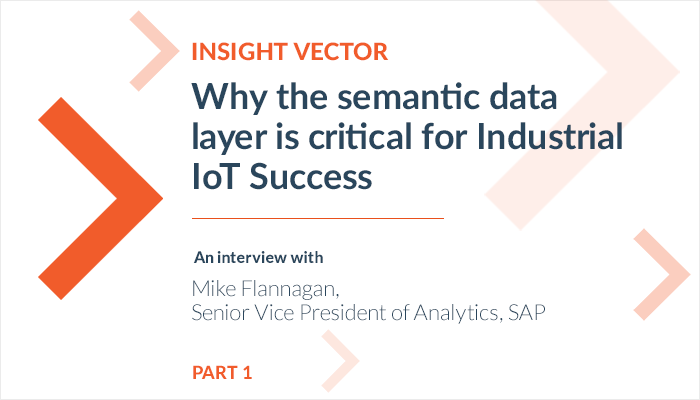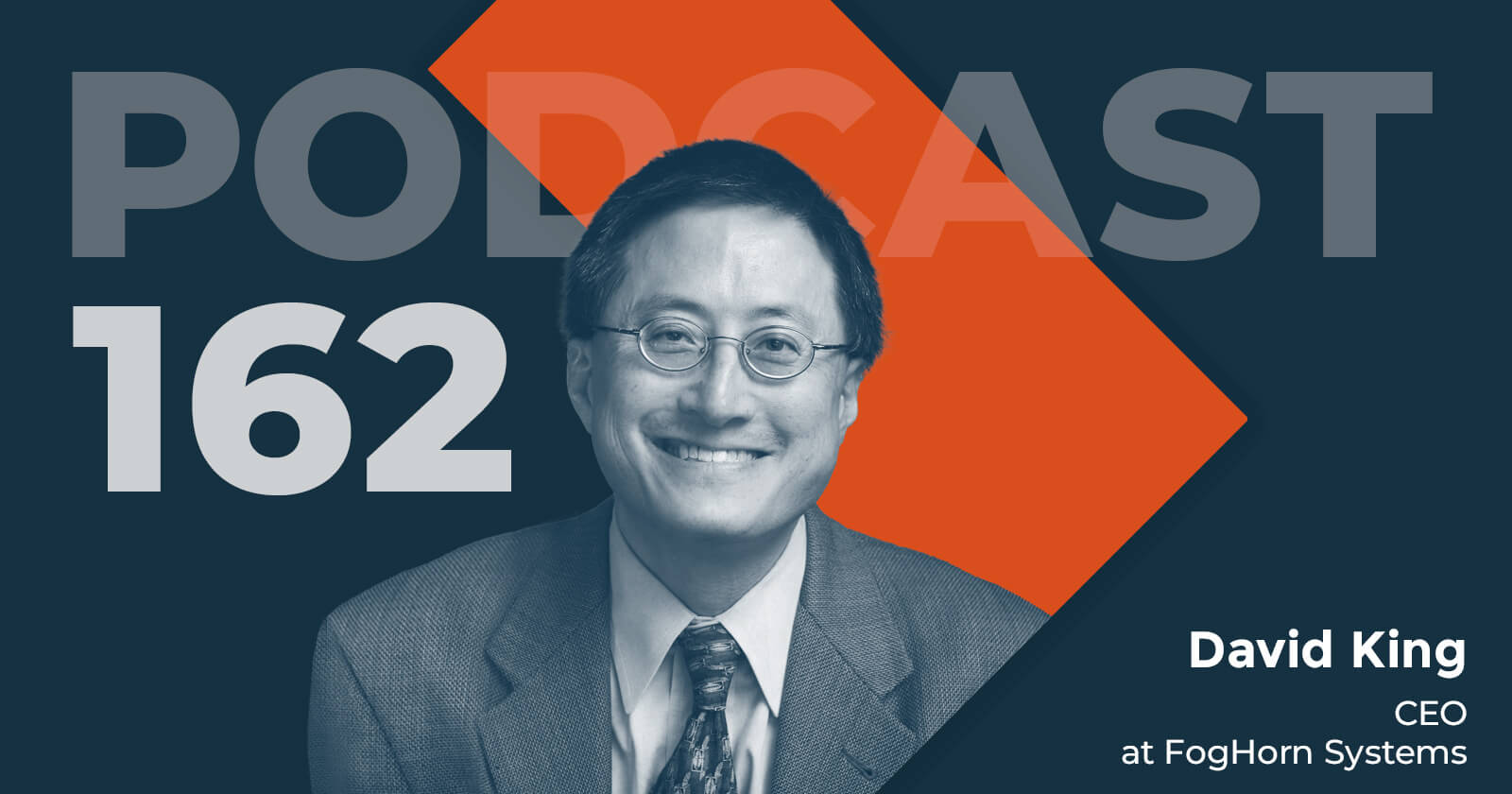Insight Vector: Why the Semantic Data Layer is Critical for Industrial IoT Success. Part 1of our interview with Mike Flannagan of SAP
Ken Forster


Innovation and market perspectives from leading IoT innovators
In the first part of our conversation with Mike Flannagan, we discuss the factors that lead to success in Connected Industry. A critical factor in success is the ability to harness the power of the ecosystem not just in technology but through partnerships and relationships. For large industrial firms, one of the most critical areas of focus is a semantic layer to all of the disparate data – the definition of a customer, or a part, or a condition of a machine needs to be consistent in order to generate real business value from the data. This can involve a fair degree of effort to get it right, but having a common semantic layer is an underappreciated factor to realize Connected Industry success.
|
|
Mike Flannagan,
|
What in your experience informs your views on Connected Industry?
I've worked extensively for large technology companies as well as with startups over the past 15 years. The scope and scale of where all of this is all going is staggering. What’s always struck me as interesting is to put these technologies in context of how consumers live their lives, and how businesses can help them solve their problems. At SAP, we work with the largest companies, a majority of which are running on our ERP systems. Therefore, we have the unique ability to make connections, using data and analytics, and to link that back to the customers’ business process; that scale and broad impact is what’s really exciting to me.
When you see businesses that are successful with Connected Industry solutions, what do they get right?
The real value of Connected Industry is the power of the ecosystem. The power comes not from closed communities or integrated stacks as much as from having interoperability and extensibility. Those that get it right are able to extend their value through partnerships and relationships. Where companies struggle is when they are primarily looking in the rear view mirror as to how value was created in the past, and trying to rethink their connected assets in that historical context.
How has the evolution of Industrial IOT paralleled and differed from ERP systems?
When we talk about IoT from the pure IT perspective, it’s not that different from TCP/IP. What I mean by that is at the beginning, there were incompatible networking protocols. What TCP/IP provided was a standard so Apple, Novell, IBM and other technologies could communicate with one another. It’s early days, but IoT is bringing that same compatibility, which is crucial as many industrial firms use proprietary systems. Think about a manufacturing floor, for example, that is only getting more complex with machinery and technology. We’re well past the point where any customer is using a single vendor solution. Where IoT can help, especially in Industrial IoT, is to fill this interoperability gap.
Back to the manufacturing example: if a customer has plants in different locations, they need to be able to look at common measures of quality and output – even with different equipment. Quality is a critical business outcome, which most likely involves several machines from different vendors. To get a common view you can’t rely on standardized equipment, hence the need to be more open and interoperable.
As IoT systems have evolved to handle growing complexity, ERP systems have evolved right alongside them to handle the complexity of the business processes driving those things. Interoperability is critical to executing complex business processes – from quote to cash, through manufacturing, shipping, registering and invoicing a product. ERP systems function to connect the different steps of the process the same way IoT connects the different machines.
Regarding data – what are potential challenges for newer adopters?
What is most overlooked when talking about data is the idea of a semantic layer. The semantic layer is where different data streams are put into a business context. There are many sensor manufacturers, and each have different ways to represent the readings of the sensors: differing alphanumeric readings, decimal points etc. To get value from these sensors, they need business context. How do I define “X?” Or define a customer? If there’s no common way to define a customer, risks can result.
Think of a connected supply chain – how does one define the word “product?” Is it a line item on an invoice? Something with a sensor? Or a SKU number in a quoting and order system? The definition must be harmonized with the “thing” I have shipped and billed, in order to derive business value from those things. This could be connecting to warranty information or making it possible to compare wear levels for a part coming from different manufacturers.
For new adopters, the challenge is always in deriving value from this new data. But the missing link between data and value is context, and that can be alleviated with a semantic layer.
Who is working on standardization for a semantic layer?
Anyone working with IoT data will run into semantics, whether it is a dedicated layer or something worked out ad hoc. This work will be comprised of two questions: what is the business definition and what does the data look like? In the absence of established industry standards for business terms, the first priority should be to agree on consistent definitions. There are many good tools like SAP Business Warehouse and the Business Objects Semantic Layer, but they only help if you have consistent business definitions.
The flip side of defining the business context is defining what the data looks like. Keep it all or aggregate? Do we need every measure on a ball bearing around forever, or do we aggregate it over the course of a day or month? This boils down to understanding what data to keep and for how long. Making these decisions is valuable work to undertake in concert with robust definitions.
Look for part 2 next week! Where our conversation with Mike Flannagan of SAP delves into the challenges of Industrial IoT and the role of data analytics, machine learning and AI to solve industry challenges.
 |




